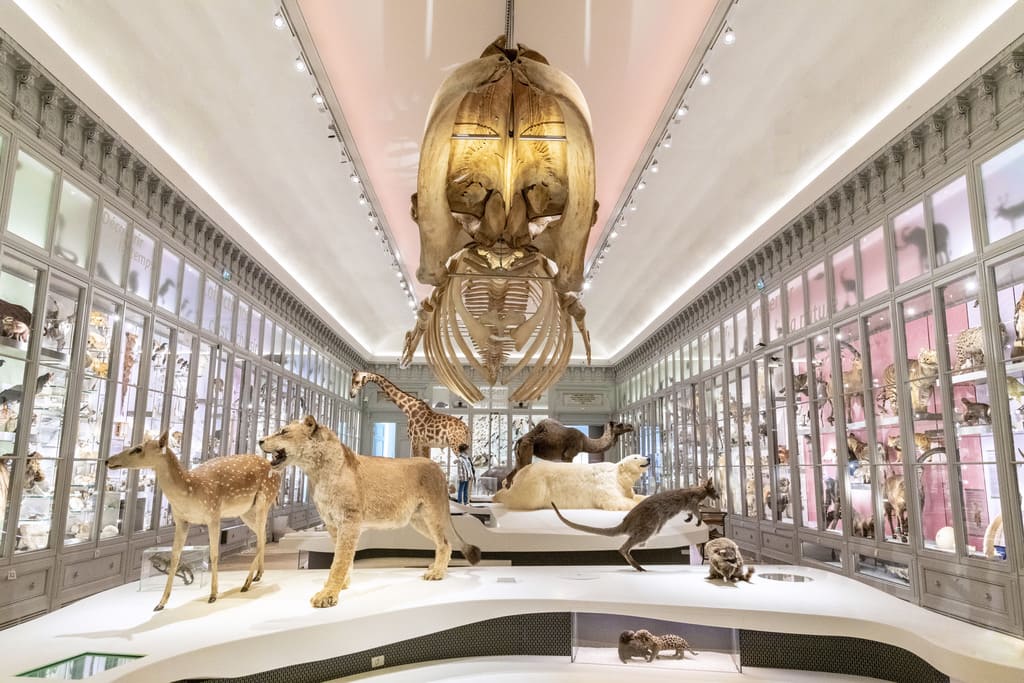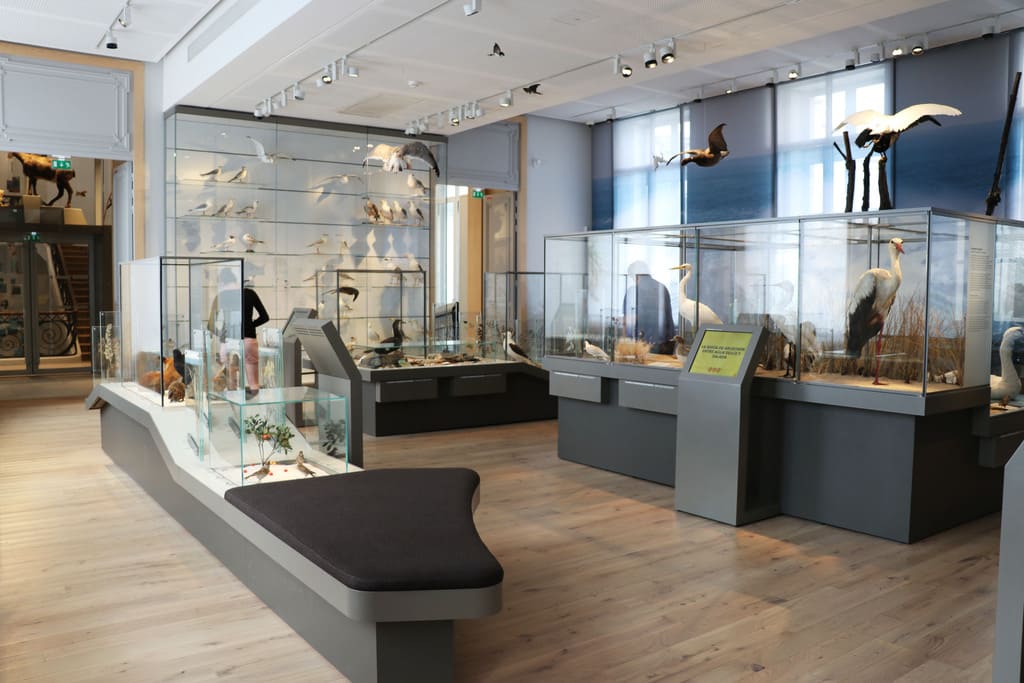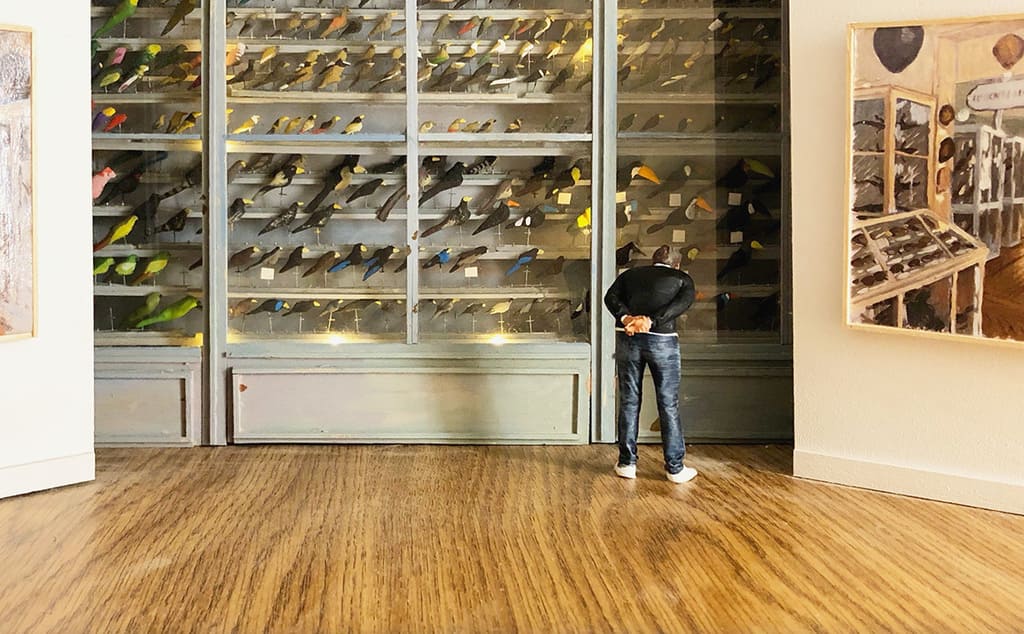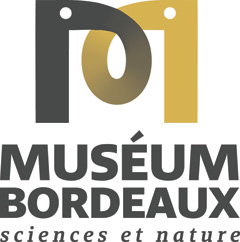The scientific and cultural specifications
The scientific and cultural specifications for the Museum of Bordeaux were established to define the key directions and strategies for the museum. The main thrust of this project is the place of humans in nature, the common thread of the new museum experience and more specifically the permanent exhibition. In the permanent exhibition, visitors are encouraged to ponder the place of humans in nature.
A programme of exhibitions of varying lengths and rhythms will shine a spotlight on original subjects and new collections.
The renovation and extension
The redevelopment was an opportunity to renovate historic parts of the site and extend the basement to create an additional 500 sq.m of space for hosting temporary exhibitions. The challenge was to accommodate the full complexity of requirements in terms of conserving the collections, meeting accessibility standards, optimising the building’s environmental quality and improving visitor facilities. A challenge accepted and met by the Basalt Architecture, Die Werft Muséographie, Oteis and Impédance consortium.
The renovation has shown the most important parts of the building to their best advantage while introducing innovative technologies to create immersive and interactive experiences for visitors. Building on its heritage collections, the Museum of Bordeaux brings a fresh approach to learning based on acquisition of knowledge through the wonder of discovery.
The new Museum of Bordeaux
New exhibition lengths
The scientific and cultural project has established exhibitions of different lengths in the Museum of Bordeaux: permanent exhibitions, semi-permanent exhibitions (3-5 years) and temporary exhibitions (4-10 months). Exhibitions of different lengths are a way for the museum to regularly present new and original subjects and shine a spotlight on new collections.

The permanent exhibition
The permanent exhibition ‘Nature as seen by humans’ is spread out from the foyer on the ground floor to the Souverbie Gallery on the second floor. Restored to its original condition, the Souverbie Gallery is an architectural testament to the craft of museography in the 19th century. The museum designer has successfully combined clear respect for heritage with ultra-modern museum facilities.

Semi-permanent exhibitions
These exhibitions will be replaced every three to five years to rotate the items in the museum collections and present even more subjects within one of the two main themes: one universal theme, which describes how living organisms have adapted to various of its main functions, and a regional theme presenting the wealth of collections gathered from the local countryside and the diversity of its environments.

Temporary exhibitions
Temporary exhibitions give us more freedom of expression and a chance to harness the creativity of the museum, its service providers and employees/partners in view of sparking the curiosity of different audiences. By treating each temporary exhibition as a special event, they create an opportunity to collaborate with other cultural institutions and research bodies as well as artists whose work has some kind of connection with nature.
Public sector partners
French Ministry of Higher Education and Research
The Ministry of Higher Education, Research and Innovation (MESRI) leads actions which aim to bring scientific and technical heritage to a wider audience. Natural history collections conserved in museums are the focus of an active effort to establish networks. As such, the ministry regularly contributes funding to promote collections in museums including, since, 2000, those housed at the Museum of Bordeaux.
The MESRI has supported the renovation by part-funding the first feasibility studies in 2008 and then, in 2011, by contributing more specifically to the design of all the visitor-assistance multimedia solutions and the development of the Early years Museum.
French Ministry of Culture
The funding received from the French Ministry of Culture in 2011 contributed to the renovation of the protected parts of the Hôtel de Lisleferme (a listed historic monument) which included the façades, framework, the oval salon and the Louis XVI-style carved panels.
ADEME (France’s Environment and Energy Management Agency)
Renovating the Museum presented the opportunity to improve the building’s environmental quality. The ADEME has assisted the City of Bordeaux with fitting an energy exchange and recovery system in the sewage network which is used to recover energy from waste water and convert it to meet the museum’s heating, dehumidifying and air-conditioning needs. In total, 652 MWh should be recovered to meet and manage the temperature and humidity conditions required to safeguard the collections. One-third of the total cost of the operation, carried out in 2016, was covered by the ADEME. The agency also offers a commissioning service to ensure the building fully meets quality standards. The service guarantees continuity between the different phases of the project and provides due care and attention to ensure the required energy performance and comfort are achieved.
Region of Nouvelle-Aquitaine
The Region of Nouvelle-Aquitaine has contributed to the Museum of Bordeaux’ overall renovation of the Hôtel de Lisleferme and in particular the restoration of protected parts (framework and roofing, façades and Louis XVI salon). It also contributed to the survey and general contracting costs and work on the administrative wing. The Region’s funding was received in 2011 and 2012.



